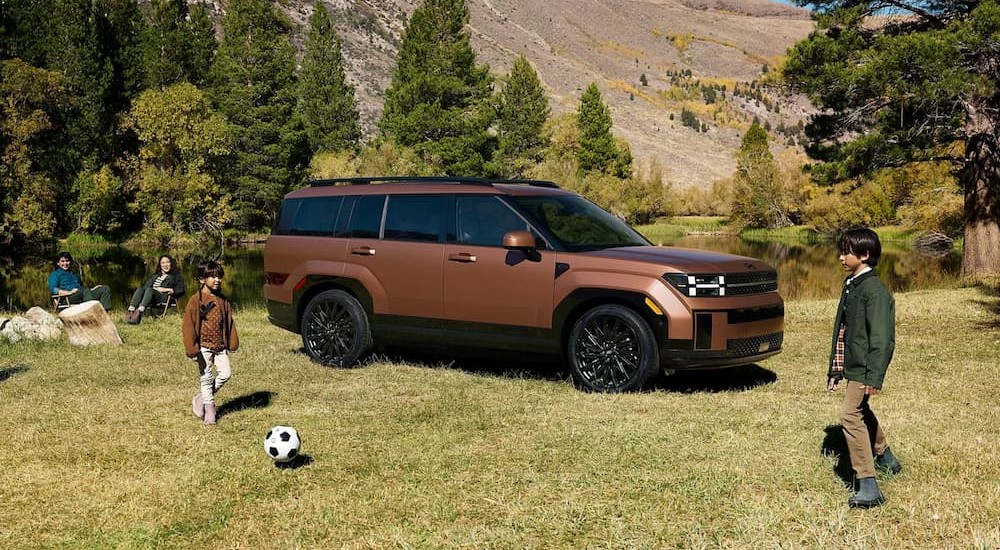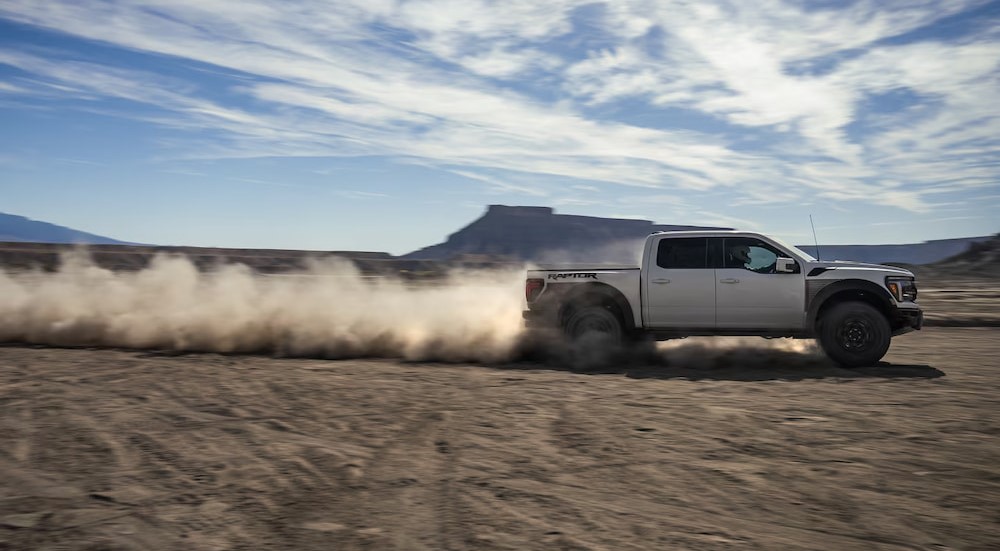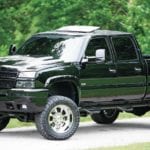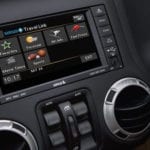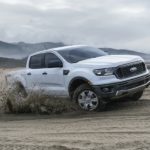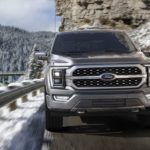From four-wheel drive and a spacious cargo bed to locking differentials, extended cabs, and ground clearance, there are a few features that should never be treated as an afterthought when you’re shopping for your next truck. Then, there are those features that should be avoided at all costs.
In an attempt to cash in on the profitable pickup segment, automakers have continuously pushed the envelope with new designs, features, and construction methods that they hope will help them achieve an edge in the ultra-competitive segment. Some are a treat, drawing new customers and compelling the entire industry to innovate, whereas others do irreparable harm to a brand’s reputation.
Taken together, the following four poor features would result in a sort of Franken-truck that could terrorize villagers and drivers alike. In an attempt to help drivers steer clear of a pickup purchase that invokes the worst in Gothic horror, I’ve compiled a short list of features that haven’t stood the test of time (if they even made it to the market at all). Read on as I piece together a pickup that only a mad scientist could love as I review four of the worst pickup features that have ever sprung to life.
Unibody Construction
Drivers who haven’t spent much time crawling underneath their car, truck, or SUV might be surprised to learn that their vehicles are built using one of two very different construction methods. The first, called body-on-frame, sees the vehicle’s body and chassis constructed separately and bolted together on the assembly line. Until the 1930s, almost every vehicle on the market employed a body-on-frame design. That all changed in the mid-1930s when the Nash 600 hit the market in 1941.
That sedan was the industry’s first mass-produced unibody vehicle, as the frame and body were manufactured as one single piece. This design had a number of advantages for efficiency, safety, and comfort, with the lightweight approach allowing automakers to maximize fuel efficiency and tame the occasionally rough driving dynamics of body-on-frame vehicles. Unibody construction has been on the rise ever since, with an estimated 67% of all US passenger vehicles employing the method as of 2021.
The most noticeable unibody-related trend is the rise of the crossover SUV. While SUVs once relied on the same body-on-frame construction as their pickup predecessors, brands have increasingly embraced unibody design over the last few decades, leading to a new generation of efficient, nimble crossovers that have become a force to be reckoned with.
If there’s one segment that has resisted the unibody wave, it’s the humble pickup. Designed to put in hard work, whether it be towing, off-roading, or being loaded down with weighty cargo, pickups have stuck to body-on-frame construction for a few reasons. Unibody vehicles simply can’t match the towing capacity of body-on-frame models or handle the torque a pickup can put out, and they often aren’t built with trailer hitches designed to handle heavier loads. They also suffer in off-road environments due to the relative weakness of their bodies.
A body-on-frame vehicle is built with a sturdy steel frame that can resist the twisting forces that come with exploring the road less traveled. Unibody vehicles are also more expensive to repair due to the fact that, if serious damage is incurred, the frame isn’t as easy to repair since it’s all one single unit. If you’re the type of driver who tends to put their truck through its paces and expect consistent performance both on-road and off, you might want to consider a body-on-frame model.
So, what models should drivers avoid if they prefer the body-on-frame construction method? Unibody trucks are a pretty small list, populated by the likes of the Hyundai Santa Fe, Honda Ridgeline, and Ford Maverick. These models do offer some real advantages in terms of efficiency and comfort, but just don’t expect them to go toe-to-toe with their off-roading, trailer-hauling cousins from the body-on-frame world.
Tank Turn
The Rivian R1T’s EV powertrain and unique quad-motor design opened the door to an interesting feature that’s been rarely seen outside of video games and real-world battlefields: tank turning. By spinning the left and ride sides of a tank’s treads in opposite directions, operators are able to perform tight, 360-degree turns—essentially rotating in place, allowing for the sort of maneuverability that can make such a difference in a land battle.
Rivian first demonstrated its own Tank Turn feature in 2019, leveraging the R1T’s quad-motor setup to spin this EV pickup in circles. To be fair, Rivian isn’t the only brand that’s been suckered into the Tank Turn technique. Mercedes experimented with the technology on its EQG concept SUV, and Ford has filed a patent for its own design, but thankfully, neither of these brands has gone so far as to bring it to market.
Rivian came close but nixed the feature before the release of the R1T simply because there was no practical, real-world use for the technology. The ability to rotate your truck in a tight circle might seem like a fun novelty, but it doesn’t have much use outside of some very specific (and rare) off-road applications—and off-roading was actually the death knell of the Tank Turn feature!
In early 2023, Rivian CEO RJ Scaringe copped to the fact that Tank Turn’s demise was largely due to its impact on the integrity of off-road trails. Turning your R1T into an EV version of the Tasmanian Devil might seem like a fun off-road experience, but it turns out it’s hell on the trail itself. Rivian received a lot of criticism over the feature from off-roading groups and, in an attempt to stay true to its environmentally friendly ethos, canceled Tank Turn before it ever came to fruition.
This waffling raises one interesting question: Did Rivian ever actually intend to release Tank Turn in the first place? Call me cynical, but announcing ambitious, innovative features in order to garner a little media attention and then not actually following through has sort of been the modus operandi of the startup world, especially when it comes to the automotive sector.
Just look at Tesla, which failed to deliver on various Cybertruck-related features, from its promised 500-mile range and ability to double as a boat to the very Tank Turn-like Crab Walk system. These pie-in-the-sky features certainly turned a lot of heads and inspired no shortage of headlines but failed to actually make it into the production model. Ford already offers a Trail Turn Assist (TTA) feature, which accomplishes much the same feat without the use of four independent motors; TTA simply applies the brakes to the inside of the rear wheels, providing a drastically improved turning radius without the help of an EV powertrain.
Power Liftgates
Convenience doesn’t always equate to practicality. This has been proven time and time again throughout human history, but the trend has perhaps reached its zenith in the modern era with food delivery services like Grubhub that manage to turn a $8 fast food value meal into a $23 luxury when you factor in the fees and tip. The pickup market has not been immune to features that prioritize convenience over practicality, but the most egregious example might just be the power liftgate.
The power liftgate has become a popular optional feature on some of the industry’s leading full-size models, from the Chevrolet Silverado 1500 and Ram 1500 to the Ford F-150. This feature does exactly what it says on the box, allowing drivers to lift or lower the tailgate at the touch of a button. In some models, this button is located on the dashboard, while others offer a version that can be activated using the truck’s key fob. This might sound like an obvious evolution of contemporary truck design, but once you start digging into the details, it’s easy to spot the drawbacks.
The tailgate you’d find on the average SUV or hatchback is simply another way to access the vehicle’s cargo area. These tailgates have also embraced a power-up/down approach over the last decade, but this simply doesn’t make as much sense for a pickup. First of all, a truck’s liftgate also pulls double duty as an extension of the cargo bed; this means it needs to be able to accommodate a significant amount of weight, whether it be a heavy stack of lumber, the tail-end of a canoe, or the full weight of the driver as they use it to climb into the cargo area.
It’s a structural element of the truck itself—but in order to remotely lift and lower the liftgate, automakers have to use lightweight materials like aluminum that can compromise the integrity of the liftgate. Powering any traditionally manual feature on a vehicle also means the addition of motors, pulleys, and electronic elements that can cost a pretty penny to replace should they ever fail. It might seem like a fun optional feature when you’re picking out your next truck at the dealership, but it could easily turn into an unnecessarily expensive repair down the line.
Secondly, having to drop or raise a truck’s gate by hand is simply not a problem that will resonate with most drivers. When you’re carrying an armful of groceries or are loaded down with a youth soccer team’s worth of sports equipment, the ability to remotely open an SUV’s tailgate instead of raising it over your head like a powerlifter can be a helpful little feature. This simply isn’t true of a truck’s tailgate, which, in a worst-case scenario, can be flung wide open with a single finger. It’s a solution without a problem and exactly the sort of superfluous feature that is contributing to the ever-rising cost of the modern pickup.
Pure Luxury
From high-end supertrucks like the Ford F-150 Raptor and Ram 1500 TRX to opulent luxury trims like the Ford F-150 King Ranch, Chevrolet Silverado 1500 High Country, and Toyota Tundra 1794 Edition, luxury features have become an important part of the pickup formula. That said, recent history has proven that a pickup can’t survive on its luxury credentials alone.
Lincoln was the first modern brand to try its luck in the pickup segment, introducing the Blackwood in 2002. Plagued by an undersized bed and a reputation for unreliability, the Blackwood only lasted one year before being pulled from the market with just 3,383 units produced. The Blackwood actually had a decent amount going for it, including an F-Series frame, an F-150 SuperCrew cab, a permanently-mounted power tonneau cover that provided a waterproof seal for the cargo bed, and a posh interior based on Lincoln’s Navigator, but there simply wasn’t any demand for a pickup from a brand with no tenure in the segment.
Cadillac took a pass at the class in 2002 with a truck-ified version of the Escalade dubbed the EXT, and while that truck stayed on the market until 2013, sales never met expectations. Lincoln reentered the fray in 2006 with the Mark LT, and while it outsold both the Blackwood and Cadillac EXT in the early going, this truck once again hit the scrap heap.
Granted, it’s a different story south of the border, with the second-gen, Mexico-exclusive Mark LT being a perennial best-seller for Lincoln until it was retired in 2014. The Mark LT’s success on the international market was not an outlier. Mercedes-Benz tried its hand at a luxury pickup in 2017 with the X Class but failed to find success as it was widely criticized for prioritizing luxury over the sort of reliability and performance drivers have come to expect from the pickup segment.
So why have these standalone luxury offerings failed while the luxury trims of established models have become more prevalent and popular across the market? It can probably be attributed to reputation. Drivers simply associate certain brands with certain strengths and segments. Toyota and Honda are reliable, Nissan and Hyundai are affordable, and a Subaru marks you as someone who knows their way around a kayak.
The same is true for Ford, Chevy, GMC, and Ram, four brands that have become synonymous with pickup performance. With so much history behind models like the F-150, Silverado 1500, Sierra 1500, and Ram 1500, drivers simply have more data and experience to draw on when choosing their next truck. Tastes have definitely changed in the pickup market over the last few decades, and luxury features are playing a vital role in the buying process, but it’s pickup luxury trims—not pickups from luxury brands—that are really driving sales and consumer interest.
The Real Monster, All Along, Was the Manufacturer
There’s nothing wrong with a little innovation, but indulging in too much of a good thing can also have its consequences. I applaud automakers for taking new risks in the pickup segment; however, while it undoubtedly results in some novel (and useful) features like multi-function tailgates, low-speed off-road cruise control, and innovative safety systems that take a lot of uncertainty and stress out of the towing experience, there has also been a steady supply of duds that fail to make a lasting impact on the industry.
From the less-than-robust unibody approach and luxury brands trying to get a piece of the pickup pie to ill-conceived features like tank-turning and unnecessary additions like power liftgates, automakers have logged more than a few misguided attempts at trying to push the segment forward. This list of regrettable pickup tech is by no means complete, but it should help drivers avoid some of the worst models and features currently on the market.

